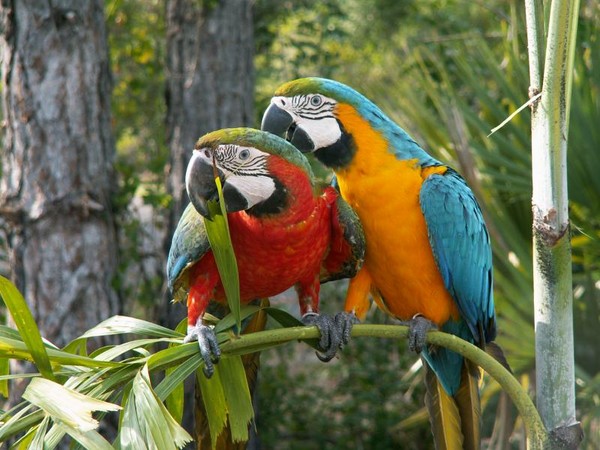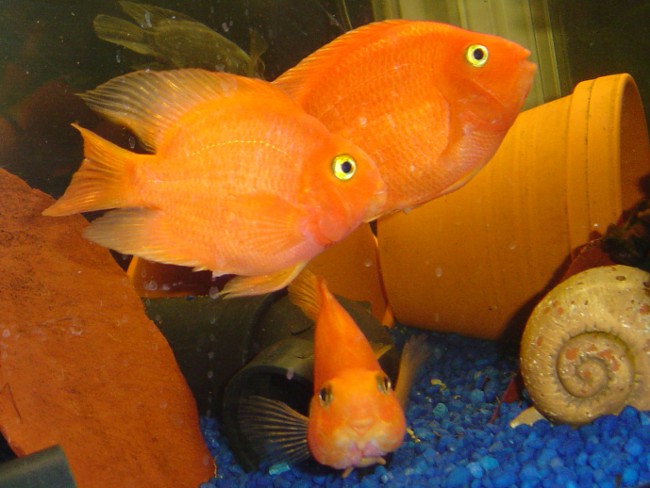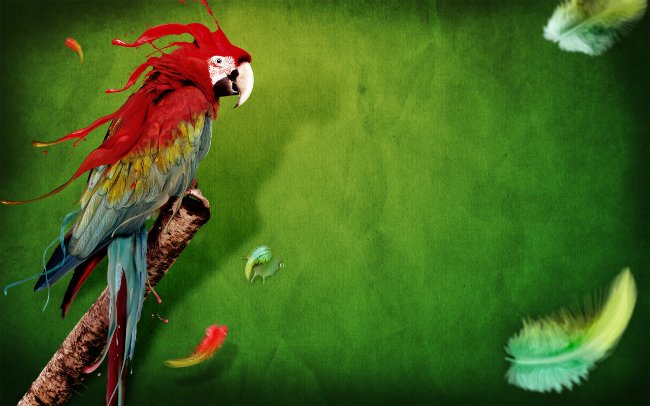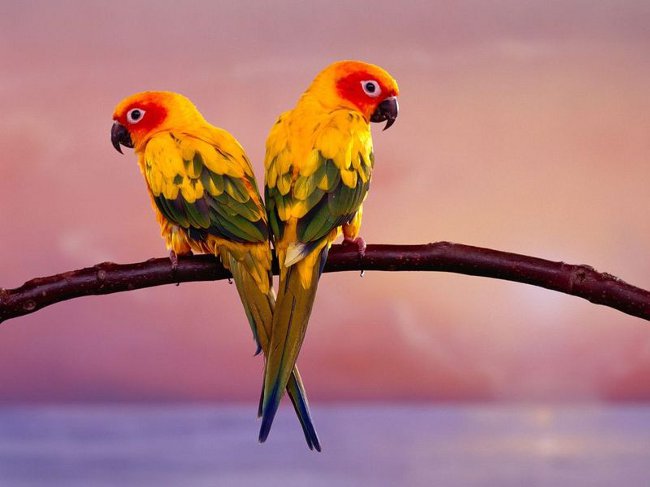Senegalese parrot
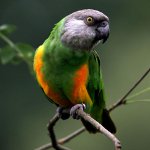
Perhaps the most famous species of parrots, whichcontain in captivity, - these are wavy parrots and cocks. But the man domesticated other parrots, both large and small. Very unpretentious in the content, for example, Senegalese parrot.
The homeland of the Senegalese long-winged parrot is western and south-western Africa. Senegalese parrot is a small bird, the length of his body is usually 22-25 cm, and the Senegalese parrots weigh about 125-170 g. These parrots have a strong enough physique and a short tail.
The plumage of a Senegalese parrot haspredominantly green (upper body, tail, "panties", wings), the lower side of the abdomen is yellow or orange, the head is dark gray. On the chest there is a wedge-shaped pattern of green color. By the way, depending on the color of the abdomen (it can be saturated orange, yellow or yellow-orange, red or red-orange) and the intensity of the green color in the plumage distinguish three subspecies of Senegalese parrots.
The Senegalese parrot - intelligent, intelligent, mobile and sociable bird. He quickly becomes attached to the owner. Senegalese parrots can be taught to talk, but his vocabulary will not be as rich as some other species of parrots, just a couple dozen words and a few phrases. But this kind of parrots perfectly assimilates various tricks.
The Senegalese parrot is quite unpretentious in its content, but nevertheless it is worth paying special attention to several important moments. Senegalese parrots are large and powerful for theirsmall beak size. Combined with cleverness, it poses a danger both for your apartment and for the parrot himself: there have been cases when birds with their beaks opened the cage lock and went to "host". At best, the interior of the apartment may suffer, in the worst - the parrot. Therefore, a Senegalese parrot needs to be planted in a sound, strong cell.
Cage for the Senegalese parrot should be spacious (not less than 80х90х80 cm), it mustbe comfortable, not too thin perches and tall and hollow trees. However, it is impossible to keep a bird in a cage permanently: a Senegalese parrot needs periodic flights around the apartment. While releasing the parrot for freedom, be sure to close the windows (or tighten them with a grid). It is desirable in different parts of the apartment to equip a few plots, so that the parrot could rest on them.
In the parrot cage there should be two feeding troughs: one for food, the second for minerals and smallpebbles necessary for normal processing and digestibility of feed. You will also need a drinker and a special bath with clean water - the Senegalese parrots love to swim very much. Even in the cage there must be a dark corner, where the parrot can hide in the moment of danger. And to grind the beak and claws, you need to hang thick branches in the cage.
What to feed this species of parrots? Senegalese parrot will feel great on a diet consisting of a specialized food for medium parrots, fruits, berries and vegetables. You also need to give the parrot greens and twigs. However, one should be careful: many house plants, some types of vegetables and fruits (for example, avocados) for the parrot are poisonous. More information about what products can and can not be given to parrots, you can read in our article on feeding parrots.
As we have already said, a Senegalese parrot usually quickly gets used to the master, it's easy enough to tame it. However, so that you do not have problems with the pet, you need to buy the bird from a trustworthy breeder. You can not buy parrots from the hands, birdmarkets, in suspicious pet stores: you risk buying a bird smuggled in illegally. First, it can be sick (quarantine, of course, such parrots do not pass). Secondly, you can slip an adult bird caught in the wild, and such parrots are often aggressive and poorly tamed.
Despite the fact that the Senegalese parrot is able to distinguish people and become attached to them, with other species of parrots he gets on badly: Senegalese parrots do not tolerate competition.
Senegalese parrot - funny, intelligent and sociable bird. If you are willing to give enough time to this active person, he will become a wonderful pet for you. With proper care, a Senegalese parrot can live in captivity for about 35 years, some parrots survive to 50.



